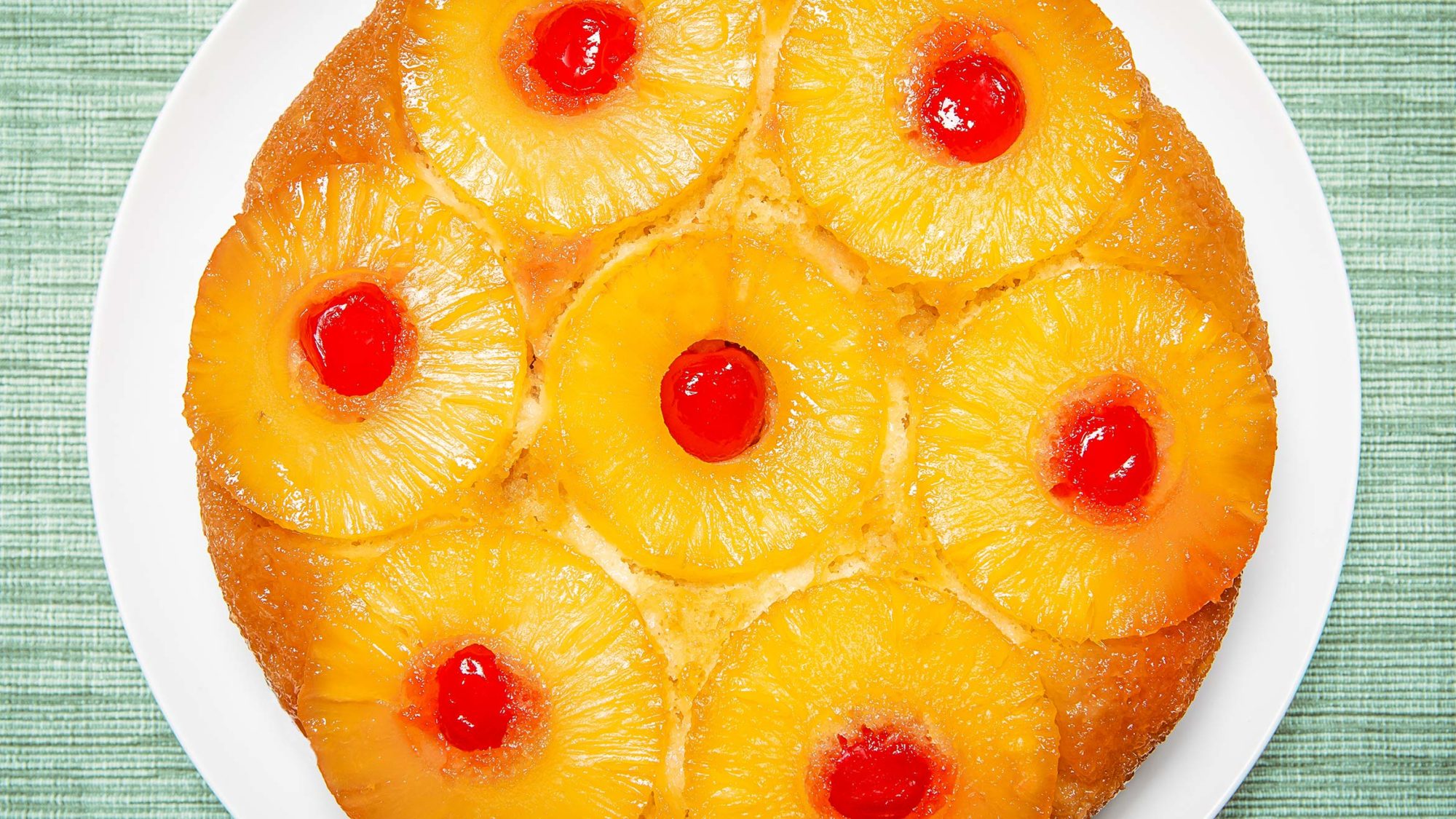
Reach for the can for sunny slices of this classic, and not forgotten, cake.
Over the past hundred years we’ve come a long way as a population driven by dessert. We have entire television series dedicated to baking competitions, stores dedicated to pastry hobbyists, and we can order fresh stalks of rhubarb and pints of strawberries to our home with a click. But before we had all these options available for our great bakeoffs, we had canned pineapple rings. And we didn’t realize how lucky we were.
On the surface, canned pineapple may seem a choice made for convenience—a subpar crutch for the Sandra Lees of the world. But if you’ve ever baked with it (and you should going forward), you can appreciate its subtle acidity, its juicy consistency, and above all, the impeccably, soothingly uniform precut yellow rings—as opposed to those uneven, fibrous fresh slices. For those who appreciate baking for the exact science that it is, a can of pineapple rings can be a beacon of reassurance. (And as Jaya Saxena recently wrote for Eater, Sandra Lee may have been onto something with all the cans.)
While I’m not going to dissuade you from blending your canned pineapple rings into a drink or bruléeing them to eat with ice cream, there’s really no better use for this innovation than a pineapple upside down cake. In fact, in 1925, when Dole sponsored a recipe contest to use the ingredient, more than 2,000 submissions were a version of the inverted pastry—possibly riffs on the apple-topped tarte tatins that became popular in the late 1800s in France.
The epitome involves a buttery brown sugar layer at the bottom of a skillet of a baking pan (although I like to use a deep pie dish), topped with a layer of pineapple rings and maraschino cherries, and filled in with a simple vanilla cake batter. Sometimes there’s a smattering of pecans in the mix, or a drop of coconut extract to really hammer home the tropical theme. I like a few pinches of lemon zest to complement the fruit with a flash of freshness in the cake. As the cake bakes, the brown sugar and butter melt and caramelize so that the whole thing can be inverted out of the pan when it’s done baking, revealing the pineapple pattern below.
Every edition of The Joy of Cooking since the original publication in 1931 has featured a recipe for pineapple upside-down cake, always calling specifically for canned fruit. “Fresh, impeccably-ripe pineapple would certainly work, but the texture would be different,” says John Becker, the co-author of the most recent edition and great-grandson of the series’ founding editor. Plus, the variation in acidity and sweetness from fruit to fruit would mean that bakers would have to adjust for sugar on a case-by-case basis, introducing some guesswork into the equation. “Compared to fresh, canned pineapple is a known quantity,” Becker says.
And even if you learn how to cut your fresh pineapple into rings from an amiable YouTube instructor named Mr. Food, dressed in a pineapple-covered shirt, your cake will never have quite the same visual effect. To get that perfect hexagon (or grid) of buttercup-yellow loops, dotted with glossy maraschino cherries, reach for the can.